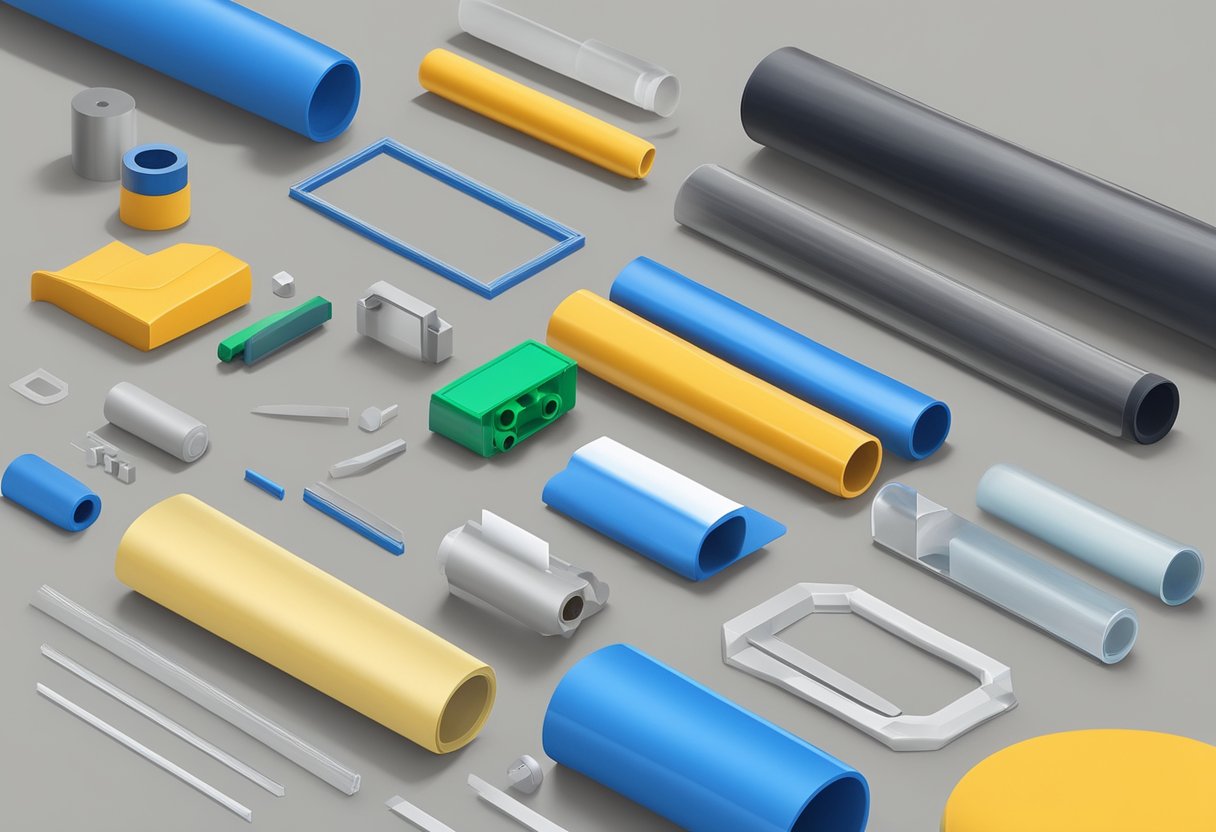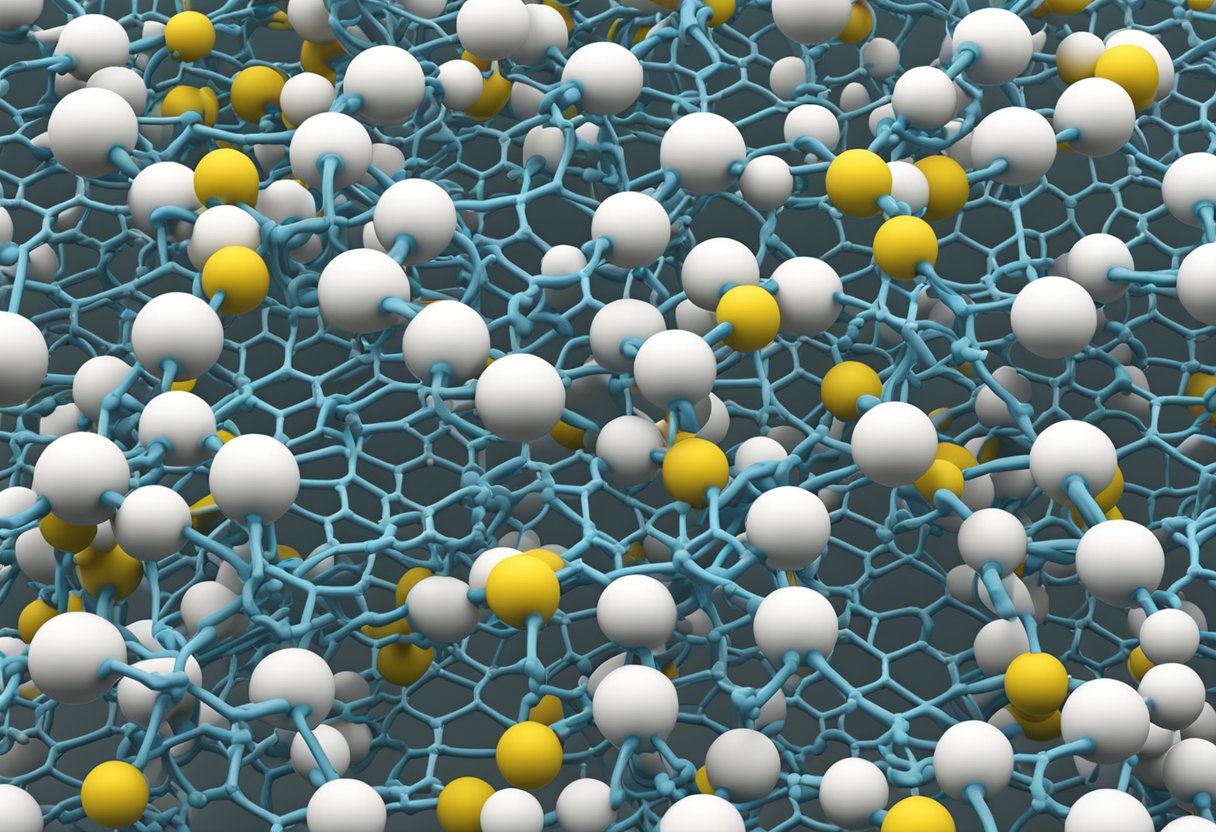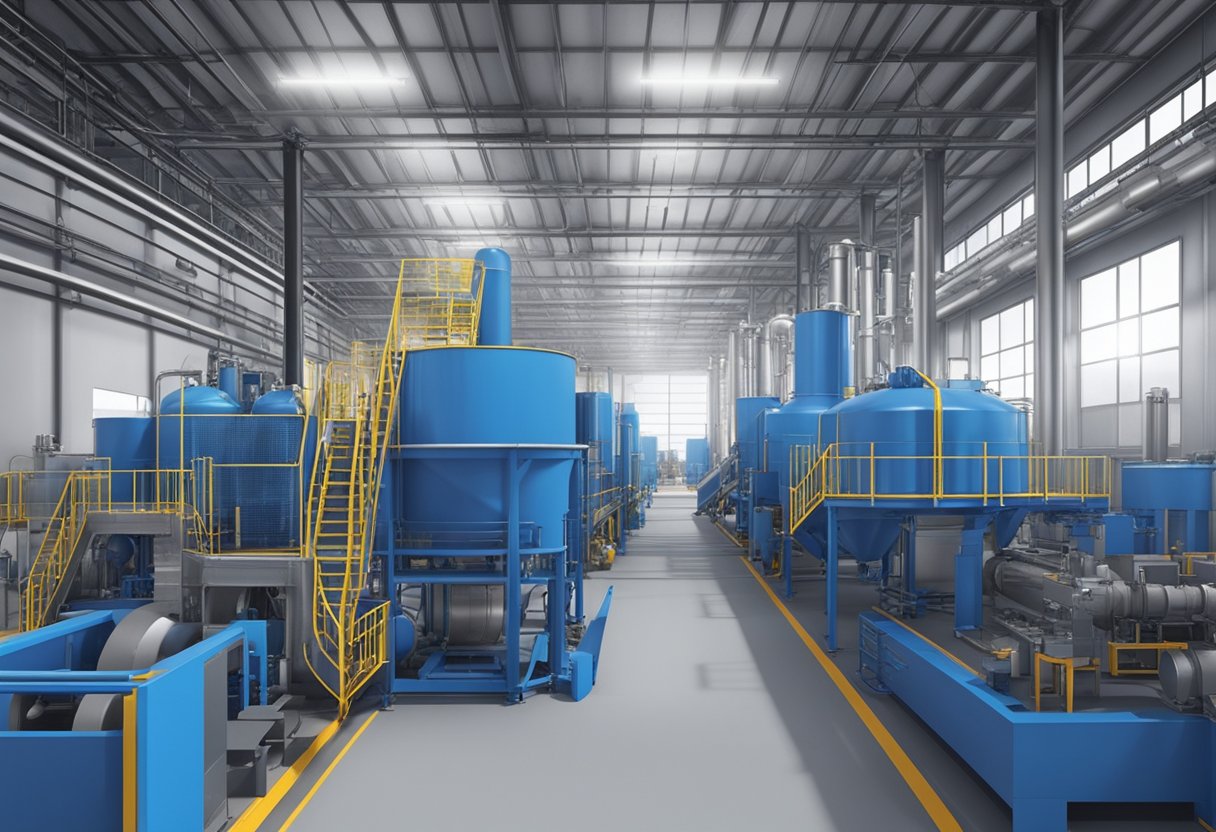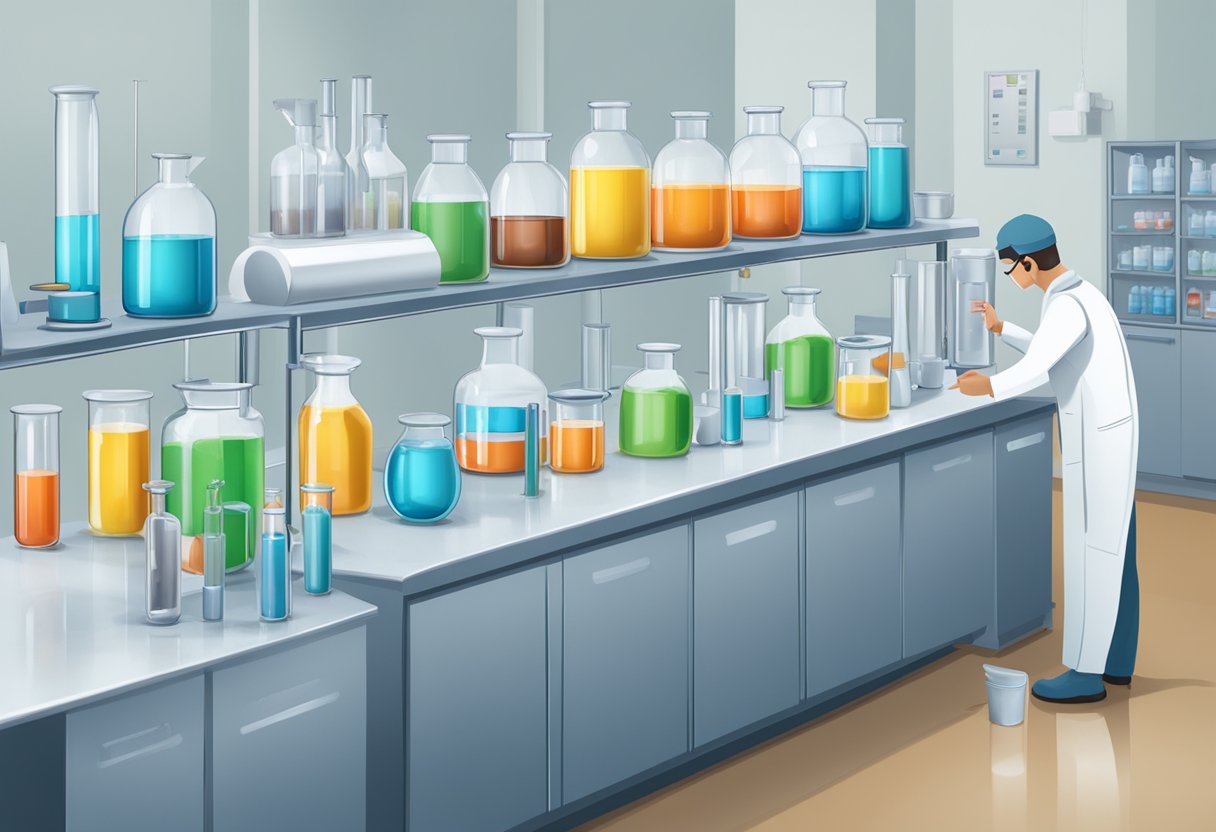Types of PVC Stabilizers: A Comprehensive Overview
19/01/2024
Types of pvc stabilizers, or polyvinyl chloride, is a commonly used plastic material that is known for its durability, flexibility, and versatility. However, PVC can be unstable and prone to degradation over time, which can lead to a loss of mechanical properties and a shorter lifespan. To address this issue, stabilizers are added to PVC to enhance its performance and extend its useful life.

There are several types of stabilizers that can be used with PVC, each with its own unique properties and benefits. Some of the most common types of PVC stabilizers include heat stabilizers, light stabilizers, and processing stabilizers. Heat stabilizers are designed to protect PVC from thermal degradation, while light stabilizers protect against UV radiation and other forms of light damage. Processing stabilizers, on the other hand, are used to improve the processing characteristics of PVC during manufacturing.
Understanding the different types of Pbt resin stabilizers and their functions is essential for selecting the appropriate stabilizer for a given application. This article will provide an overview of the various types of PVC stabilizers, their properties, and their applications, in order to help readers make informed decisions about which stabilizer is best suited for their specific needs.
Chemistry of PVC Stabilizers

PVC stabilizers are additives used to prevent degradation of polyvinyl chloride (PVC) during processing and usage. PVC is a thermoplastic polymer that is widely used in various applications such as pipes, cables, flooring, and medical devices. However, PVC is susceptible to degradation due to heat, light, and chemicals, which can lead to discoloration, loss of mechanical properties, and ultimately failure of the product.
The chemistry of PVC stabilizers involves the interaction of the stabilizer with PVC and the degradation products generated during processing and usage. There are various types of PVC stabilizers available, each with their unique chemical properties and mechanisms of action.
Some of the commonly types of pvc stabilizers include:
- Lead-based stabilizers: These were the first generation of PVC stabilizers and are still used in some applications. However, due to their toxicity, they are being phased out in many countries. Lead-based stabilizers work by reacting with the degradation products of PVC and forming stable complexes.
- Calcium-based stabilizers: These are the most commonly used PVC stabilizers today. Calcium-based stabilizers work by reacting with hydrogen chloride, which is generated during PVC degradation, and neutralizing it. This prevents the formation of hydrochloric acid, which can accelerate PVC degradation.
- Tin-based stabilizers: These stabilizers work by reacting with PVC and forming a protective layer on the surface. Tin-based stabilizers are effective at low temperatures and are often used in applications such as outdoor profiles and window frames.
- Organic stabilizers: These stabilizers are based on organic compounds such as phenols, amines, and phosphites. Organic stabilizers work by scavenging free radicals generated during PVC degradation and preventing chain scission.
In conclusion, the chemistry of PVC stabilizers is complex and involves the interaction of the stabilizer with PVC and the degradation products generated during processing and usage. The choice of stabilizer depends on the application and the specific requirements of the product.
Lead-Based Stabilizers

Lead-based stabilizers are a type of PVC stabilizer that have been used for many years. They are known for their excellent heat stability and lubricating properties. However, they are also known for their toxicity and environmental impact. In recent years, there has been a shift towards using alternative stabilizers that are less harmful to the environment.
Tribasic Lead Sulfate
Tribasic lead sulfate is a commonly used lead-based stabilizer. It is known for its excellent heat stability and lubricating properties. It is often used in rigid PVC applications such as pipes, window profiles, and siding. However, it is also known for its toxicity and environmental impact.
Dibasic Lead Phosphite
Dibasic lead phosphite is another commonly used lead-based stabilizer. It is known for its excellent heat stability and lubricating properties. It is often used in flexible PVC applications such as cables, flooring, and roofing membranes. However, it is also known for its toxicity and environmental impact.
Lead Stearate
Lead stearate is a lead-based stabilizer that is often used in combination with other stabilizers. It is known for its excellent lubricating properties and is often used in flexible PVC applications such as cables, flooring, and roofing membranes. However, it is also known for its toxicity and environmental impact.
Overall, lead-based stabilizers have been widely used in the past due to their excellent heat stability and lubricating properties. However, they are also known for their toxicity and environmental impact. As a result, there has been a shift towards using alternative stabilizers that are less harmful to the environment.
Calcium-Based Stabilizers

Calcium-based stabilizers are widely used in PVC formulations due to their excellent heat stability, low cost, and good electrical properties. They are particularly effective in rigid PVC applications, such as pipes, profiles, and fittings, where high-temperature processing conditions are required.
Calcium Stearate
Calcium stearate is one of the most commonly used calcium-based stabilizers in the PVC industry. It is a white, odorless powder that is insoluble in water but soluble in organic solvents. Calcium stearate is often used in combination with other stabilizers, such as lead-based or tin-based stabilizers, to improve the overall performance of the PVC formulation.
Calcium stearate is effective at preventing the degradation of PVC caused by heat and UV radiation. It also acts as a lubricant, improving the flow of the PVC during processing. However, it has a limited stabilizing effect on its own and is often used in conjunction with other stabilizers.
Calcium Zinc Stabilizers
Calcium zinc stabilizers are a type of mixed-metal stabilizer that combines the benefits of calcium and zinc. They are often used as a replacement for lead-based stabilizers, which are being phased out due to environmental concerns.
Calcium zinc stabilizers provide excellent heat stability and weatherability, making them ideal for outdoor applications. They also have good electrical properties and are compatible with a wide range of PVC formulations. However, they can be more expensive than other types of stabilizers and may require higher processing temperatures.
Overall, calcium-based stabilizers are an important component of PVC formulations, providing excellent heat stability, low cost, and good electrical properties. Calcium stearate and calcium zinc stabilizers are two of the most commonly used types of calcium-based stabilizers, each with their own unique benefits and drawbacks.
Organotin Stabilizers
Organotin stabilizers are a type of PVC stabilizer that are widely used in the plastics industry. These stabilizers are known for their excellent heat stability and resistance to UV light, making them ideal for use in outdoor applications. Organotin stabilizers can be divided into two main categories: Methyltin stabilizers and Butyltin stabilizers.
Methyltin Stabilizers
Methyltin stabilizers are a type of organotin stabilizer that are commonly used in the production of PVC pipes and fittings. These stabilizers are known for their excellent heat stability and resistance to UV light, making them ideal for use in outdoor applications. Methyltin stabilizers are also known for their excellent compatibility with other PVC additives, such as plasticizers and lubricants.
Butyltin Stabilizers
Butyltin stabilizers are another type of organotin stabilizer that are commonly used in the production of PVC products. These stabilizers are known for their excellent heat stability and resistance to UV light, making them ideal for use in outdoor applications. Butyltin stabilizers are also known for their excellent compatibility with other PVC additives, such as plasticizers and lubricants.
In conclusion, organotin stabilizers are an important type of PVC stabilizer that offer excellent heat stability and resistance to UV light. Methyltin stabilizers and Butyltin stabilizers are two common types of organotin stabilizers that are widely used in the plastics industry. When selecting a PVC stabilizer, it is important to consider the specific application and requirements of the product in order to choose the best stabilizer for the job.
Barium-Based and Mixed Metal Stabilizers
Barium-based and mixed metal stabilizers are commonly used in PVC formulations due to their excellent thermal stability and cost-effectiveness. These stabilizers work by reacting with the hydrogen chloride that is released during the PVC degradation process, thus preventing the formation of hydrochloric acid.
Barium Cadmium Stabilizers
Barium cadmium stabilizers are a type of mixed metal stabilizer that contains both barium and cadmium. These stabilizers are known for their excellent heat stability and resistance to weathering. They are often used in outdoor applications such as window profiles, fencing, and siding.
Barium cadmium stabilizers are typically used in rigid PVC formulations and are particularly effective in preventing discoloration and degradation caused by exposure to UV light. However, due to the toxicity of cadmium, there has been a shift towards using alternative stabilizers in recent years.
Barium Zinc Stabilizers
Barium zinc stabilizers are another type of mixed metal stabilizer that contains both barium and zinc. These stabilizers are known for their excellent heat stability and are often used in flexible PVC formulations such as wire and cable coatings, flooring, and roofing membranes.
Barium zinc stabilizers are preferred over barium cadmium stabilizers due to their lower toxicity and environmental impact. They are also more cost-effective than other types of stabilizers, making them a popular choice for manufacturers.
In summary, barium-based and mixed metal stabilizers are widely used in PVC formulations due to their excellent thermal stability and cost-effectiveness. Barium cadmium stabilizers are effective in preventing discoloration and degradation caused by exposure to UV light, while barium zinc stabilizers are preferred due to their lower toxicity and environmental impact.
Liquid Mixed Metal Stabilizers
Liquid mixed metal stabilizers, also known as organometallic stabilizers, are a popular type of PVC stabilizer due to their excellent heat stability, color retention, and processing properties. These stabilizers are typically a combination of metal soaps and organic compounds that are dissolved in a liquid carrier.
Potassium Zinc Stabilizers
Potassium zinc stabilizers are a type of liquid mixed metal stabilizer that are commonly used in PVC applications. They offer excellent heat stability and color retention, making them ideal for use in high-temperature applications. Potassium zinc stabilizers are also known for their good processing properties, which can help to improve the quality and consistency of the final product.
Sodium Zinc Stabilizers
Sodium zinc stabilizers are another type of liquid mixed metal stabilizer that are commonly used in PVC applications. They offer similar benefits to potassium zinc stabilizers, including excellent heat stability and color retention. Sodium zinc stabilizers are also known for their good processing properties, which can help to improve the efficiency and consistency of the manufacturing process.
Overall, liquid mixed metal stabilizers are an excellent choice for PVC applications that require high heat stability and color retention. By choosing the right type of stabilizer, manufacturers can ensure that their products meet the highest standards of quality and performance.
Organic Stabilizers
Organic stabilizers are a type of PVC stabilizer that are derived from natural sources. They are known to be environmentally friendly and are often used in applications where sustainability is a priority.
Epoxidized Soybean Oil
Epoxidized soybean oil (ESBO) is a popular organic stabilizer for PVC. It is a non-toxic and renewable resource that is derived from soybean oil. ESBO is used in a wide range of PVC applications, including food packaging, medical devices, and toys.
ESBO stabilizes PVC by reacting with the double bonds in the polymer chain. This reaction creates a more stable structure that is less likely to degrade over time. ESBO is also effective at preventing discoloration and maintaining the mechanical properties of PVC.
Phosphite Stabilizers
Phosphite stabilizers are another type of organic stabilizer that are commonly used in PVC applications. They are derived from phosphorous acid and are known for their excellent thermal stability.
Phosphite stabilizers work by reacting with free radicals that are produced during PVC processing. This reaction prevents the free radicals from causing chain scission and degradation of the polymer. Phosphite stabilizers are also effective at preventing discoloration and maintaining the mechanical properties of PVC.
Overall, organic stabilizers are a great choice for PVC applications where sustainability is a priority. They are effective at stabilizing PVC and are environmentally friendly. Epoxidized soybean oil and phosphite stabilizers are two popular types of organic stabilizers that are commonly used in PVC applications.




